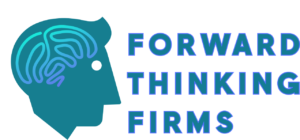
Understanding the Importance of a Strong B2B Sales Training Program
A well-structured B2B sales training program is one of the most powerful tools an organization can invest in to boost sales performance and enhance customer relationships. In today’s hypercompetitive market, B2B sales representatives are not just selling products—they’re selling solutions, insights, and trust. Unlike B2C sales, B2B transactions often involve multiple stakeholders, longer sales cycles, and larger investments, making the sales process far more complex. Without structured training, even experienced sales professionals may struggle to adapt to evolving buyer behaviors and digital sales strategies. A solid training program helps bridge this gap by providing teams with the skills, strategies, and confidence needed to close deals effectively. It also empowers them to understand client pain points, position products as valuable solutions, and build long-term partnerships. By equipping sales teams with these capabilities, businesses can improve conversion rates, shorten sales cycles, and strengthen their market reputation.
Core Components of a High-Impact B2B Sales Training Program
Every effective B2B sales training program is built on a foundation of core competencies that shape high-performing teams. The most successful programs integrate practical knowledge, communication mastery, and problem-solving skills tailored to business clients. To develop a program that resonates, organizations must include:
- Deep product and industry expertise
- Relationship-building and consultative selling skills
- Negotiation and objection-handling strategies
- Effective use of CRM and digital sales tools
- Continuous learning and feedback mechanisms
These components work together to create a comprehensive learning experience that balances theory and real-world application. By incorporating interactive sessions, such as role-playing or simulations, trainees gain hands-on experience managing client conversations and complex negotiations. Additionally, ongoing training sessions and refreshers ensure that sales professionals stay updated with the latest market insights and product developments. This approach doesn’t just teach how to sell—it transforms how teams think, strategize, and connect with their clients.
How to Design a B2B Sales Training Program That Aligns with Business Goals
Designing a B2B sales training program begins with understanding your company’s objectives and how sales performance supports those goals. Start by conducting a detailed assessment to identify skill gaps, team challenges, and areas for improvement. This data-driven approach allows leaders to customize training modules that address specific needs. Setting measurable objectives—such as improving close rates, increasing client retention, or expanding average deal size—helps determine whether the training is delivering tangible results. The design phase should also include a mix of learning formats, including workshops, webinars, mentorship sessions, and e-learning modules. These variations accommodate different learning styles and keep participants engaged. Moreover, training should mirror real-world scenarios by integrating client objections, negotiation challenges, and cross-department collaboration. Tracking progress through performance metrics and feedback ensures continuous improvement. Aligning sales training with overall business strategy turns learning into a powerful driver for sustainable growth.
Leveraging Modern Tools and Technology for Sales Enablement
Technology is redefining how B2B sales training programs are delivered, making learning more personalized and measurable. Digital learning platforms allow for self-paced education, while AI-powered tools analyze performance and recommend tailored content. Data analytics plays a key role in identifying learning patterns and skill gaps, helping leaders adjust training approaches accordingly. Gamification elements—such as quizzes, leaderboards, and performance badges—enhance motivation and participation. Virtual workshops and webinars enable geographically dispersed teams to collaborate, share ideas, and learn from each other. Mobile learning platforms also give sales reps access to training resources anytime, anywhere, ensuring continuous development. By embracing modern tools, businesses can make training more dynamic, interactive, and aligned with evolving sales processes. The integration of CRM systems further ensures that lessons learned translate directly into improved sales outcomes.
Common Pitfalls to Avoid When Implementing a B2B Sales Training Program
Even the most well-designed training initiatives can fall short if common pitfalls aren’t avoided. One major mistake is treating sales training as a one-time event rather than an ongoing process. Skills can fade quickly if not reinforced through coaching and practice. Another common issue is ignoring individual learning preferences—some sales professionals thrive in interactive workshops, while others learn best through digital simulations. Overloading trainees with information without context can also lead to poor retention. Additionally, failing to update content to reflect market shifts or product changes can render training obsolete. Organizations should also avoid measuring success based solely on short-term metrics like initial sales spikes. Sustainable improvement comes from consistent performance growth and long-term client satisfaction. Avoiding these pitfalls ensures that your B2B sales training program remains relevant, impactful, and adaptable to evolving business landscapes.
Best Practices for Sustaining Long-Term Sales Excellence
Sustaining the momentum of a successful B2B sales training program requires building a culture of continuous learning. Organizations that prioritize professional growth tend to see higher employee engagement and lower turnover rates. One effective practice is implementing mentorship programs where seasoned sales professionals guide new hires. This encourages collaboration and fosters a sense of shared purpose. Regular refresher sessions and access to updated learning materials help maintain skill sharpness. Sales and marketing alignment is another crucial element—when both teams communicate effectively, they deliver consistent messaging to clients, which builds trust and credibility. Encouraging feedback loops between trainees and trainers ensures that training content evolves with business needs. Finally, celebrating milestones and recognizing achievements boosts morale and reinforces the value of learning. Sustained sales excellence isn’t achieved overnight—it’s cultivated through consistent effort, teamwork, and adaptability.
Real Metrics That Prove Your B2B Sales Training Program Is Working
A strong B2B sales training program must demonstrate measurable outcomes. To evaluate its effectiveness, businesses should track both quantitative and qualitative metrics. Key performance indicators might include increased close rates, shorter sales cycles, higher average deal sizes, and improved customer retention. CRM analytics can reveal which skills correlate most with sales success, allowing teams to refine future training content. Feedback from both clients and sales representatives also provides valuable insights into how well the training is translating into real-world results. Tracking engagement levels during training sessions can indicate how invested participants are in the learning process. Additionally, post-training evaluations and follow-up assessments ensure that progress is being sustained over time. The best programs use this data not only to measure ROI but to continuously refine and enhance future sessions.
Frequently Asked Questions
How long should a B2B sales training program last?
The duration depends on your organization’s goals and the complexity of your sales process. Many programs run between four to twelve weeks, followed by ongoing coaching and refreshers.
What’s the ideal balance between online and in-person training?
A blended approach works best—combining interactive workshops with flexible e-learning modules allows participants to learn effectively while balancing work schedules.
How often should sales teams undergo refresher training?
Quarterly or biannual refreshers help maintain performance levels, ensuring that skills and market knowledge remain sharp.
Can small businesses benefit from a B2B sales training program?
Absolutely. Smaller teams often gain a competitive edge through structured training because it enhances professionalism and consistency across every client interaction.
What are the most effective tools to support ongoing sales development?
CRM systems, learning management systems (LMS), AI coaching platforms, and performance tracking dashboards are among the most valuable tools for continuous growth.
Takeaway
Building an effective B2B sales training program isn’t just about teaching sales techniques—it’s about creating a culture of growth, adaptability, and excellence. When businesses invest in structured, data-driven, and engaging training initiatives, they empower their teams to communicate better, close deals faster, and build stronger client relationships. The key lies in consistency, measurable progress, and the integration of modern tools that keep learning fresh and relevant. With the right strategy, every sales professional can become not just a representative, but a trusted advisor who drives long-term business success.


